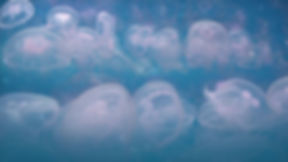
Japan 2018
Osaka to Tokyo
"Irasshaimase!" and Welcome to 'Moments of Japan'. Karen and I are exploring Osaka ‘Solo’ before starting a guided tour of Japan, ending in Tokyo.
To read the FULL Journal, click here
From the Buddhist monks of Koyasan to the high rollers of Tokyo, we capture the many faces of Japan on this tour beginning in Osaka.
We savour the region’s culinary delicacies and the beautiful views at Mt Fuji, and stay in a traditional ryokan and really soak up local culture in onsen hot springs. A great combination of the traditional and the contemporary, this adventure will provide us with a taste of the rich culture of Japan.

Osaka
Osaka is Japan's second largest metropolitan area after Tokyo. It has been the economic powerhouse of the Kansai Region for many centuries. Osaka was formerly known as Naniwa. Before the Nara Period, when the capital used to be moved with the reign of each new emperor, Naniwa was once Japan's capital city, the first one ever known.

Koyasan
The mountain of Koyasan (Mount Koya) in Wakayama Prefecture was traditionally considered sacred, and is a major pilgrimage site for followers of the Shingon school of Buddhism.
Koyasan features long avenues of tall Japanese cedar trees, and hundreds of temples and temple gardens.
Visitors often stay overnight in temple accommodation, known as shukubo.

Hiroshima
In 1589 Mori Terumoto, a regional warlord during the warring states period, gave Hiroshima its name and built a castle in what is now Hiroshima City.
In August 1945, Hiroshima City was destroyed in an instant with the dropping of the atomic bomb. Neighboring cities also suffered damage as a result of the war. Through the efforts of Hiroshima’s citizens, the region made an impressive recovery and continues to develop as a center of government, economics, and culture in the Chugoku-Shikoku Region.

Kyoto
Kyoto served as Japan's capital and the emperor's residence from 794 until 1868. It is one of the country's ten largest cities with a population of 1.5 million people and a modern face.
Over the centuries, Kyoto was destroyed by many wars and fires, but due to its exceptional historic value, the city was dropped from the list of target cities for the atomic bomb and escaped destruction during World War II. Countless temples, shrines and other historically priceless structures survive in the city today.

Tokyo
Tokyo is Japan's capital and the world's most populous metropolis, consisting of 23 central city wards and multiple cities, towns and villages west of the city cente.
Tokyo offers a seemingly unlimited choice of shopping, entertainment, culture and dining to its visitors. The city's history can be appreciated in districts such as Asakusa and in many excellent museums, historic temples and gardens. Contrary to common perception, Tokyo also offers a number of attractive green spaces in the city center and within relatively short train rides at its outskirts.
